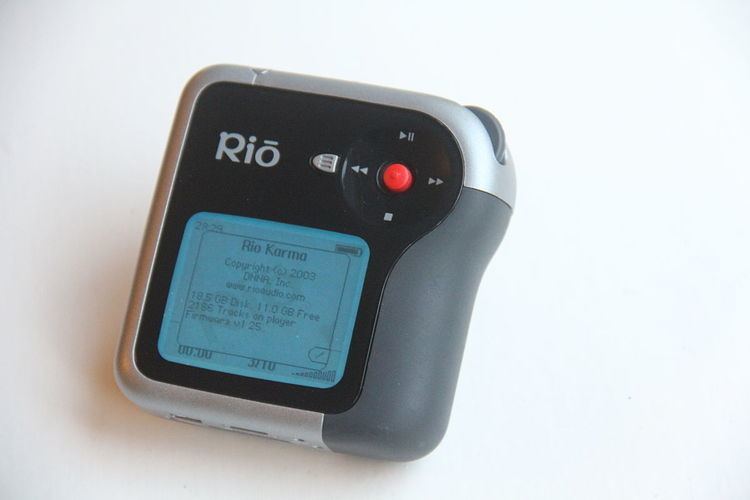Manufacturer Rio Retail availability 2003-2005 | Storage 20GB hard drive | |
 | ||
Display backlit monochrome display Input 4-way directional pad, scroll wheel, three buttons | ||
The Rio Karma is a digital audio player originally made by the now defunct Rio. It was released in August 2003. It measures 2.7 × 3 × 0.9 inches (6.9 × 7.6 × 2.3 cm) and weighs 5.5 ounces (160 grams). It has a 20 gigabyte (18.6 gibibyte) hard drive. The Karma is notable for its support of Ogg Vorbis and FLAC playback in addition to the usual MP3 and WMA formats, however it will not play MP2 format. It's one of the few digital audio players that is able to play MP3 tracks gaplessly (not inserting audible gaps between them) making it popular among audiophiles. It also bears the distinction of supporting file transfers via Ethernet through its docking station (as well as the standard USB 2.0). It is not supported as a plug & play removable drive (although the program Rio Taxi does allow any data to be stored). Like many Rio players, the Karma's firmware has an equalizer (notably a 5-band parametric one), cross-fader, animated menus, dynamic playlist generation, and visualizations.
Contents
Playback Screen
The Karma has three options for what is displayed on the play screen
Language
Options include English (US), English (UK), German, French, Japanese, Chinese & Spanish.
Dock Settings
For docking, there are four options for the "cradle glow".
Orientation
The player can be configured for right handed or left handed use. For left-handed use, the screen is inverted.
Modifications
The player uses a 20GB Hitachi Travelstar 1.8" hard drive. It is possible to install a higher data capacity hard drive, commonly 30, 40, or 60GB though these may be physically larger, requiring case modifications. It is also possible to swap the hard drive for compact flash-based storage as it shares the original IDE drive's signaling pinout.
Criticisms
There are two main criticisms of the Rio Karma: poor quality Hitachi hard drives and poor quality Sanyo batteries. Both can be fairly easily replaced; replacement parts and how-to guides are available online. The scroll-wheels are also prone to break easily under pressure or shock, but can often be repaired through careful disassembly and using glue or adhesive to reattach the scroll wheel to the motherboard.
